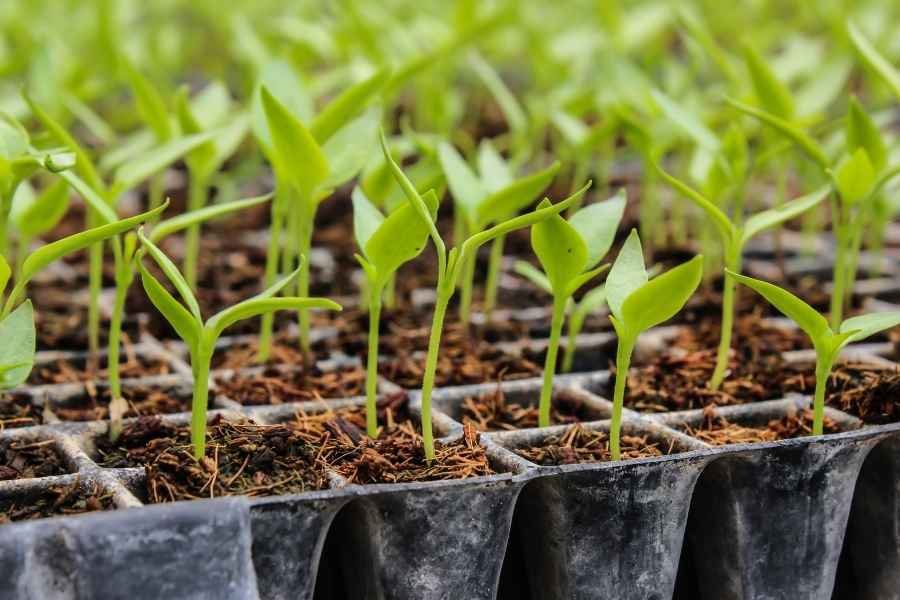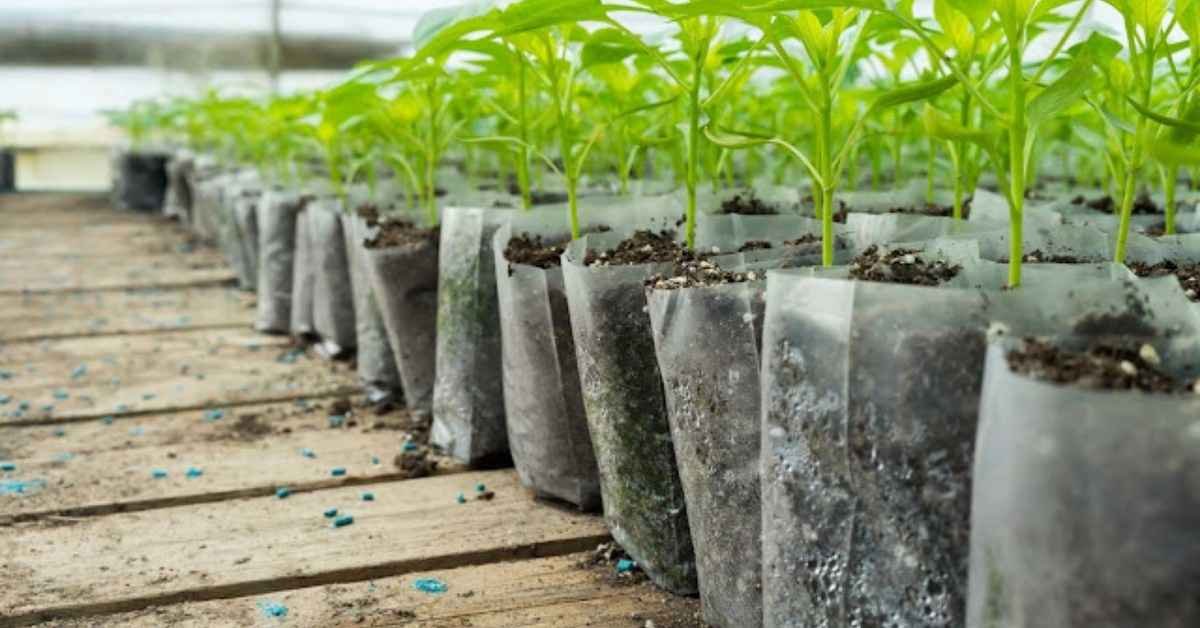Learn about the transplanting method in agriculture with definition, method, and advantages and disadvantages.
What is transplanting method in agriculture?
Transplanting is removing an actively growing plant from one place and planting it in another for further growth and production. This operation may be performed when the seedling high can endure such shocks and when environmental conditions favor the easy establishment in the new location.
Seeds of some crops, such as wheat, rice, jute, sun hemp, mustard, sesame, linseed, groundnut, gram, pea, lentil, soybean, spinach, etc., are directly sown in the main field, but seeds of some crops such as rice, vegetables, seasonal flowers, etc. are sown in the nursery bed.

Why do seedlings are raised in the nursery bed?
Seedlings are raised in the nursery bed for the following reasons.
- The seedlings of some crops are raised in the nursery bed whose seeds are smaller in size, and seedlings need sufficient care during the early stage of growth.
- The seeds of some crops that do not respond well to direct seeding in the main field are sown in the nursery bed, and the seedlings are transplanted in the main field.
- The seedlings are transplanted just after harvesting the crops; on the other hand, the crops will be late if the seeds are sown after the land preparation.
- Seedlings are raised in nursery beds with sufficient care and protected from the attack of insect pests and diseases.
- Roughing crops becomes easy.
- The crops, such as vegetables, seasonal flowers, etc., yield better if transplanted in the main field after raising the seedlings in the nursery bed.
In general, transplanting is done with seedlings (rice, tobacco, tomato, brinjal), saplings (subabool), stockings (sugar beet), transplants (seedlings or saplings that are grown an additional year or two in the nursery to make them more stout and robust) or even wildings (naturally sown plants dug up for transplanting).
Sometimes in rice, clones or tillers that form after transplanting are separated and used for second-time transplanting (double transplanting).
Transplanting technique/method (in general):
- Unpot the plant
- Check the roots
- Tease apart soil-covered roots
- Loose the soils if they’re concentrated in the pot.
- Plant in a hole.
- Place the plant at soil level or slightly higher in loose or sandy soil.
- Hand-firm the plant’s soil.
- Water the plant.
Transplanting annual flowers
Transplanting annuals is easy. Petunias, impatiens, and marigolds thrive in warm temperatures. Annual flowers come in four- or six-packs. Give plants room to grow. You have to plant annual flowers early in spring after the latest frost date before it becomes heated, which is ideal.
When your garden hole or container is ready, remove the plants and loosen their roots. Firm the dirt around the plants, then water gently using a “garden” or “flower” nozzle. Annual flowers only survive one season, but you’ll enjoy them quickly after planting.
Transplanting veggies
Early spring is an excellent time to transplant lettuce and greens because a light frost won’t hurt them. Then, wait for short-sleeve weather to plant other vegetables. Plant tomatoes, peppers, and cucumbers.
Morning or gloomy days are optimal for transplanting lettuce and greens. This protects plants from direct sun as they go from pot to soil.
Before transplanting:
- Apply water sufficiently.
- Remove vegetables from cell packs and firm soil around each plant after watering.
- Adjust water flow with your thumb to avoid injuring fragile plants.
Perennials
Spring is a fantastic season to grow daylilies. Early morning, late afternoon, or cloudy days are best for transplanting. This will give plants shade. First, water your daylily before moving it. Soil should be damp, not waterlogged. Divide your daylily. Place the divide in a fresh flower bed in your garden. Then compact the soil. Water again to calm the transplant. Sprinkler irrigation is suitable for flowerbeds with multiple plants. Next, spread 1-2 inches of compost or mulch around plants. Mulch works to retain soil moisture and discourage weeds.
Rose bushes
You can transplant a rose in spring or whenever you can dig a hole. Set your watering nozzle before transplanting. Avoid damp and soggy soil. Start digging for the roots from the plant’s main stem carefully. It’s crucial to move plants with good root balls.
After removing the plant:
- Dig a new hole. The hole should be larger than the root ball but not deeper.
- Set the bush’s crown (where stem and roots meet) at the soil level.
- Water and firm the soil.
While the rose shrub adjusts, water it regularly. Water every few days if it’s hot. Otherwise, water once a week. Watering transplants carefully will help them adjust to their new gardens. Your plants will grow as the season advances. Transplanting makes your landscape look fantastic and grow fast.
Advantages of transplanting
The transplanting method in agriculture maintains a plant population per unit area. In addition, the rows are set according to the requirements. Seedlings are planted at uniform distances and numbers per hill. Therefore, the duration of crops in the main field is minimized. As the healthy seedlings are transplanted only, a good stand establishment can be ensured in the field.
If we want to go for intensive rice cropping, then sowing and planting. Seedlings must be raised in the nursery bed for transplanting to provide three rice crops per year per field.
Other advantages are:
- Saving and proper utilization of costly seeds are possible.
- Nourishing young and tender seedlings in a nursery bed is easy.
- It stimulates the seedling to produce more roots.
- It is possible to grow crops under unfavorable climatic conditions.
- It is possible to produce more plants of high quality through transplanting.
- Some vegetables can grow well when transplanted.
- Through transplanting, higher yields with more uniform maturity are obtained.
Disadvantage of transplanting
The total life duration of field crops increases by some 7-10 days. The transplanting method in agriculture requires more time and energy. It increases the cost of production of crops during nursery bed preparation, subsequent aftercare, and transplantation.
Other disadvantages are:
- Transplanting increases the labor and power requirement in a peak period.
- Gap-filling operation is necessary.
- Direct sown/seeded crops do not grow well if transplanted.
Field condition for transplanting
The field must be wet, and soil moisture conditions must be above saturation level. In addition, the field needs additional water to be puddled, and puddling becomes a prerequisite for transplanting in many cases.

